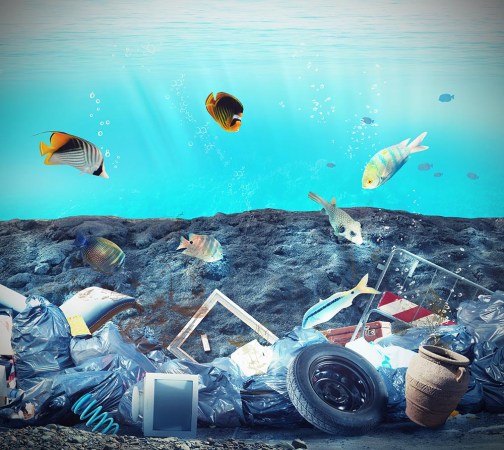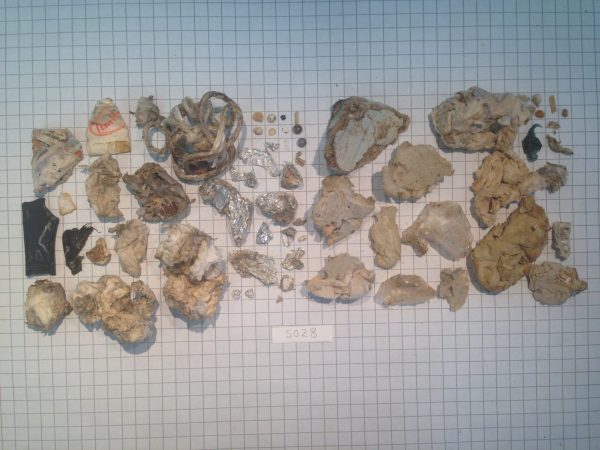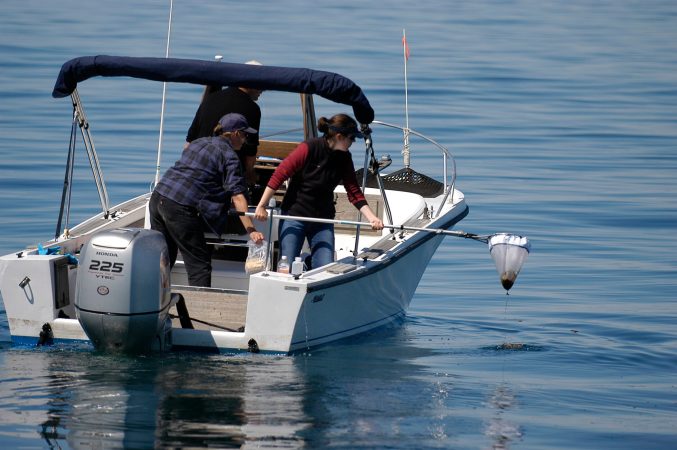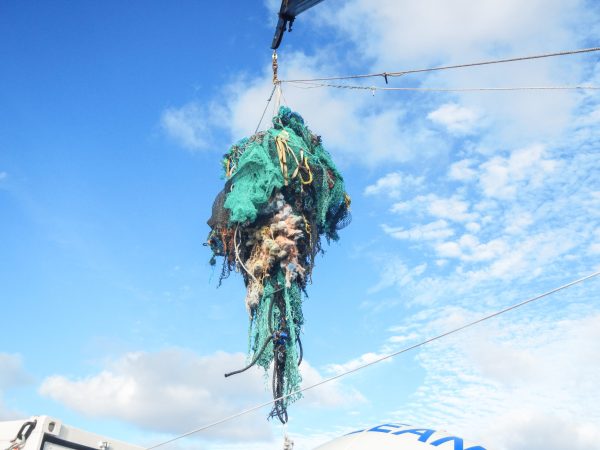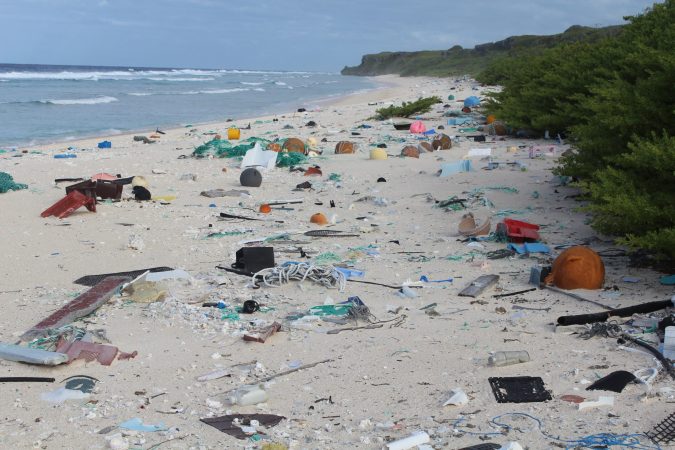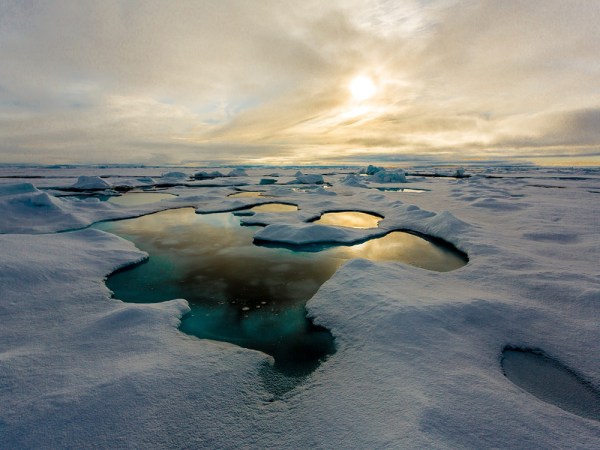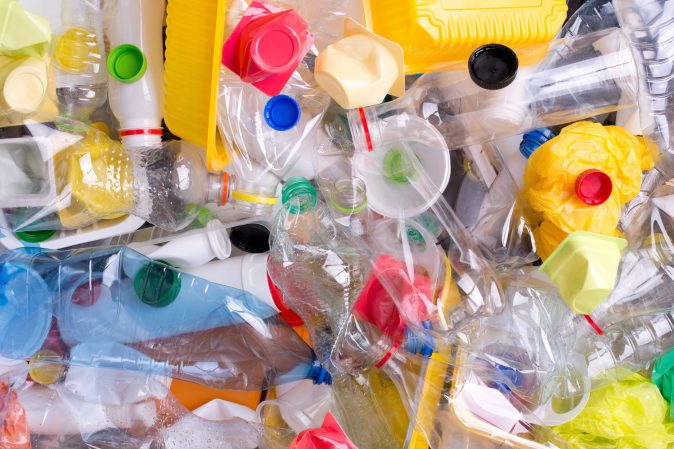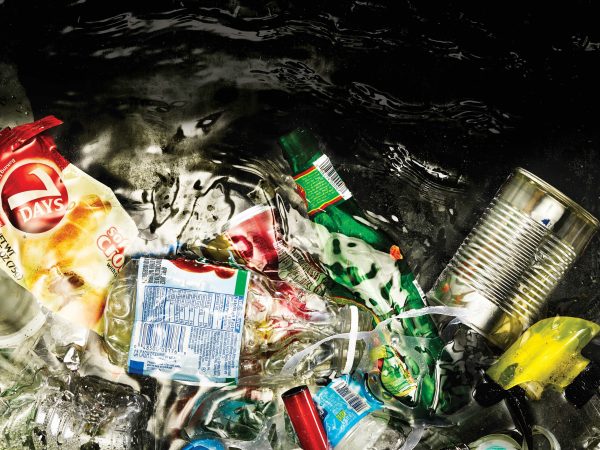

The morning of June 5, 2012, invasive species researcher John Chapman’s wife, who works for the health department in Newport, Oregon, told him he had to go with her to see a mysterious object that had washed onto the town’s beach. Chapman was initially skeptical that the beached mass would be of any interest to him, scientifically speaking. The Oregon police and parks service were already at the scene, checking the large concrete slab for radiation. A plaque said the object was a fisheries dock from Misawa, Aomori Prefecture, Japan, but Chapman only had to glance at the creatures stuck to the plastic to know the source. “I was completely shocked to see all these Asian species on this dock,” he says.
That object was a small chunk of many tons of plastic garbage launched into the sea in 2011, after an earthquake and subsequent tsunami in Japan, according to a new study in Science. Invertebrates like the Japanese shipworm and the Asian shore crab — and even a few species of fish—colonized the debris, forming floating islands of garbage and sea creatures.
These floating piles of junk traveled more than 4,350 miles to land on U.S. coastlines. They started showing up in late 2011, and will no doubt continue to arrive in the years to come. These heaps of slimy stowaways carry the threat of foreign invasion by creatures that could thrive in vulnerable U.S. ecosystems. And they’re a signal that the millions of tons of plastic trash circulating through the ocean may be transporting organisms all over the world.
“We were supremely confident that organisms did not drift passively on debris and floating objects across the ocean,” says Chapman, who works at Oregon State University. “Sometimes in your life, you learn a powerful lesson in an instant.”
Though Newport officials immediately cleaned the slab of any newcomers, researchers are concerned that some marine life slipped off in unobserved areas. “We found merely 300 species,” says James Carlton, a marine researcher at Williams-Mystic. “We assume that many more arrived that we did not sample.” Both professional and citizen scientists have been on high alert in Washington and Oregon, where at least 634 objects have landed over the past six years. They’re carefully monitoring the coastal ecosystems for any signs of disturbance. Historically, invasive species aren’t a nuisance in their former ecosystems, and would probably not present themselves as a problem for several years after arrival. It’s only later, once their lack of natural predators in the new habitat has allowed them to flourish, that they tend to overwhelm local critters. “We will try to keep our finger on the pulse of any new invasions,” says Carlton.
It’s impossible to tell which, if any, of the arriving species will cause damage to the West Coast ecosystem. But some of the organisms they found have wreaked havoc elsewhere: For example, the Oregon scientists noticed Wakame, a subtly sweet but potentially disastrous edible seaweed that divers and scientist frantically cleared from the San Francisco Bay after an outbreak in 2009. They also found the Northern Pacific seastar, a colorful echinoderm with a massive appetite that has cost Tasmania about one billion dollars in lost fishing revenue. And that’s only the tip of the trash-berg.
Even if the U.S. escapes the acquisition of a new pest this time around, the chances of another catastrophe jettisoning garbage across the ocean are high. An earthquake could rip the west coast apart any time. Climate change increases the chance of extreme hurricanes and typhoons. It’s striking that Japan, which has the best disaster preparation in the world, was the first place scientists saw this sort of intercontinental travel.

“Massive storm activity caused by climate change has potential to sweep the infrastructure off the coast,” says Carlton. The appearance of the tsunami debris did have a positive impact on disaster awareness in west coast communities, however. “The Hatfield Marine Science Laboratory, where I am at this moment, is in direct harm’s way from a similarly large tsunami expected to strike the Oregon coast in the next fifty to one hundred years,” says Chapman via email. “There were not tsunami evacuation drills here before 2012.”
While protecting people is the top priority in emergencies, dealing with the environmental aftermath is becoming increasingly important. Disaster debris used to be biodegradable: Wood would rot and get eaten by ship worms as it made its way across the ocean, and paper would melt into pulp. But not anymore. “These docks weighed 188 tons each. Impregnated with styrofoam. Incredibly well made,” says Chapwell. “And they’re unsinkable.” Plastic is infamously durable. Even after the trials of ultraviolet radiation from the sun and mechanical trauma from the waves, plastic persists. “Engineers have created it to last for a long time,” says Skye Morét, a marine scientist and a visual strategist at Periscopic. “The fact that these species were able to get here shows why plastic is kind of a problem.”
However, Moret says that huge natural disasters do not cause the same environmental damage as cumulative smaller-scale storms, which can also send garbage out to sea. “Big picture—if we could focus on stopping plastic from entering the ocean during floods, that would help mitigate the problem the most,” she says.
The Japanese government donated $5 million to the National Oceanic and Atmospheric Administration to help with tsunami debris cleanup in the U.S. But that’s only to take care of the garbage coming direct from Japan—only a tiny fraction of the more than 4.8 million tons of plastic that clog currents and wash onto shorelines all over the world. “That enormous injection of debris into the ocean is minor compared to everything that was out there,” says Chapman.
Even without future catastrophes, this huge amount of plastic could be a new mode of transoceanic travel for troublesome species. “This revealed clearly that this is a new connection between the continents,” says Chapman.
